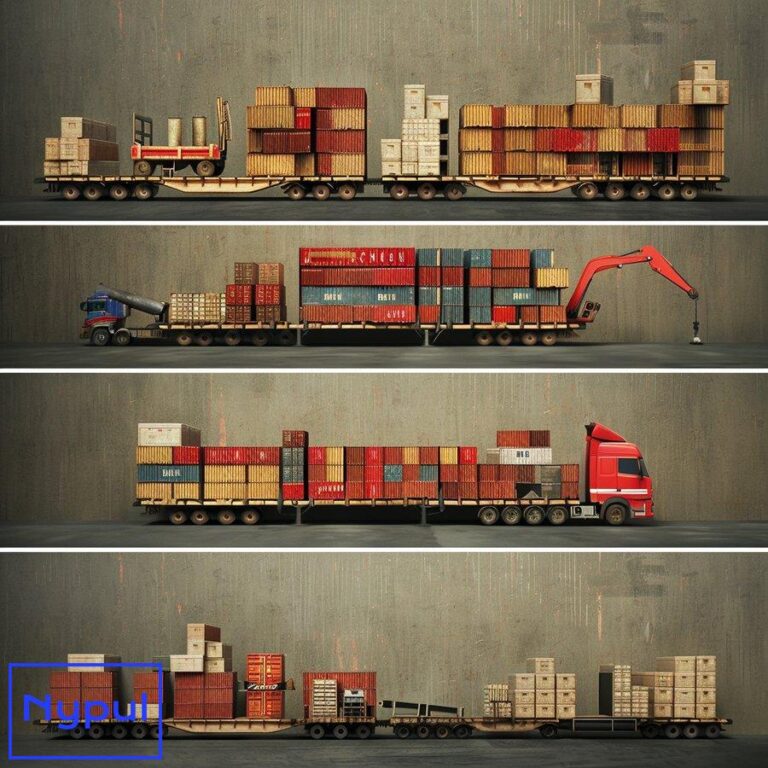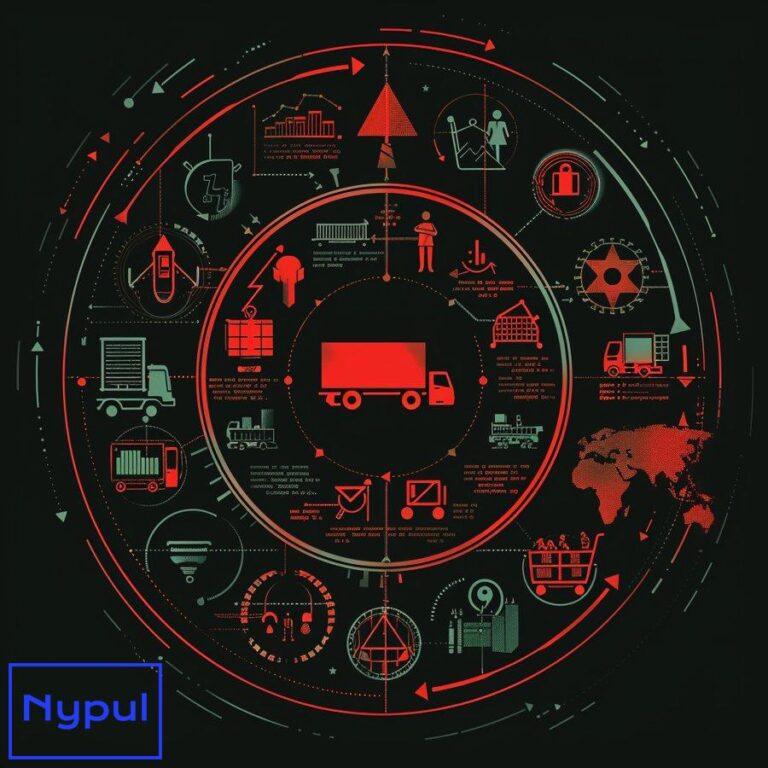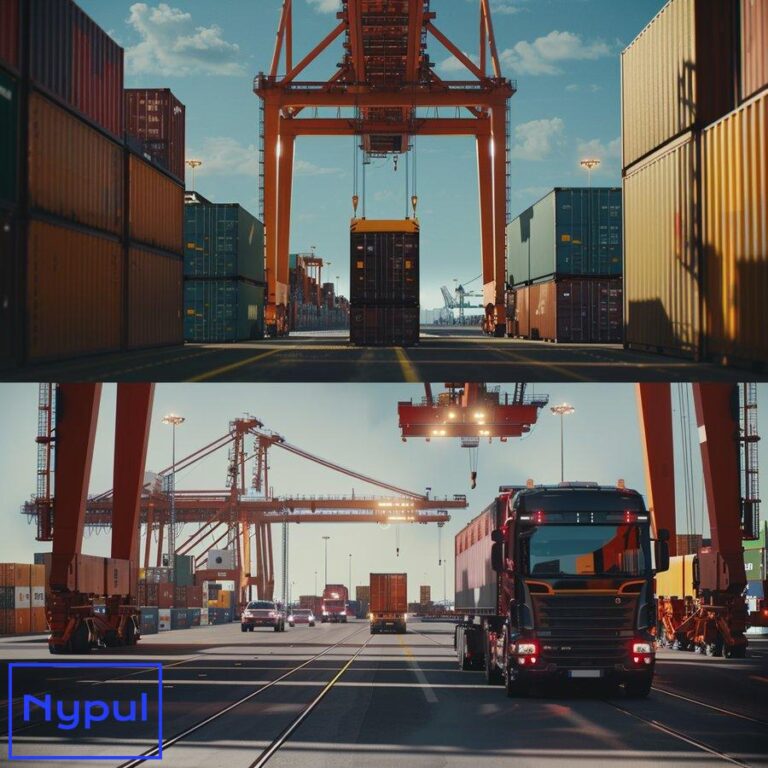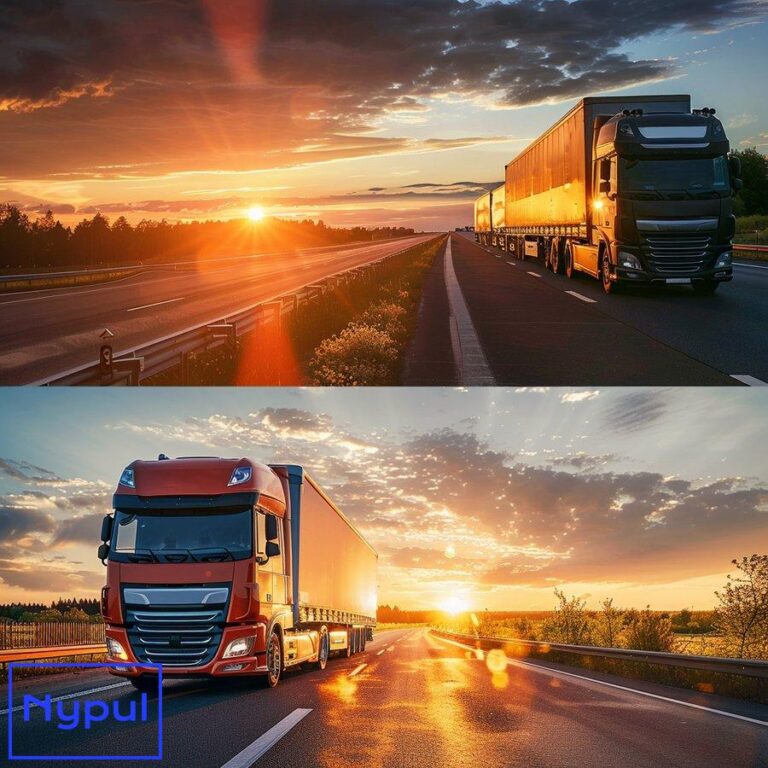What Are the Uses of Autonomous Vehicles in Transportation
How do autonomous vehicles operate in transportation?
Autonomous vehicles (AVs) represent a revolutionary leap in transportation technology, operating through a sophisticated interplay of sensors, software, and artificial intelligence. These vehicles navigate roads and make decisions without human intervention, relying on a complex system of components working in harmony.
Sensor Suite
The foundation of an autonomous vehicle’s operation lies in its sensor suite. This array of sensors acts as the vehicle’s eyes and ears, constantly gathering data about its surroundings. The primary sensors include:
LiDAR (Light Detection and Ranging): LiDAR sensors emit laser pulses to create a detailed 3D map of the vehicle’s environment. These sensors can detect objects up to 200 meters away, providing crucial information about the shape, size, and distance of surrounding objects.
Radar: Radar sensors use radio waves to detect the speed and distance of objects. They are particularly effective in poor weather conditions and can operate at longer ranges than LiDAR.
Cameras: High-resolution cameras capture visual information, allowing the vehicle to recognize traffic signs, lane markings, and other visual cues. Advanced image recognition algorithms process this data in real-time.
Ultrasonic Sensors: These sensors emit sound waves to detect nearby objects, particularly useful for parking and low-speed maneuvering.
GPS: Global Positioning System receivers provide precise location data, helping the vehicle understand its position in relation to its destination and planned route.
Data Processing and Decision Making
The vast amount of data collected by the sensor suite is processed by powerful onboard computers. These systems use machine learning algorithms and artificial intelligence to interpret the data and make decisions in real-time.
Perception: The first step in data processing is perception. The vehicle’s AI combines data from multiple sensors to create a comprehensive understanding of its environment. This includes identifying and classifying objects, predicting their movements, and detecting potential hazards.
Localization: Using GPS data and information from other sensors, the vehicle determines its exact position on the road. This is crucial for navigation and decision-making.
Path Planning: Based on its destination and current environment, the vehicle’s AI plans the optimal route. This includes considering factors such as traffic conditions, road rules, and potential obstacles.
Control: Once a path is planned, the control system executes the necessary actions. This involves steering, accelerating, braking, and other vehicle functions to follow the planned route safely.
Vehicle-to-Everything (V2X) Communication
Autonomous vehicles are not isolated entities; they are designed to communicate with their environment and other vehicles. This V2X communication enhances safety and efficiency:
Vehicle-to-Vehicle (V2V): AVs can share information about their speed, position, and intended actions with other vehicles on the road. This helps prevent collisions and optimize traffic flow.
Vehicle-to-Infrastructure (V2I): Communication with traffic lights, road signs, and other infrastructure elements allows AVs to receive real-time updates about road conditions and traffic management.
Vehicle-to-Pedestrian (V2P): Some systems are being developed to allow communication between AVs and pedestrians’ smartphones, enhancing safety for vulnerable road users.
Levels of Autonomy
The Society of Automotive Engineers (SAE) has defined six levels of vehicle autonomy, ranging from Level 0 (no automation) to Level 5 (full automation). Most current autonomous vehicles in operation fall between Levels 2 and 4:
| Level | Name | Description | Human Involvement |
|---|---|---|---|
| 0 | No Automation | The human driver performs all driving tasks | Full control |
| 1 | Driver Assistance | Vehicle can assist with steering OR acceleration/deceleration | Constant supervision |
| 2 | Partial Automation | Vehicle can assist with steering AND acceleration/deceleration | Constant supervision |
| 3 | Conditional Automation | Vehicle can handle most aspects of driving, but human driver must be ready to take control | Ready to intervene |
| 4 | High Automation | Vehicle can handle all driving tasks under specific conditions | Not required in defined conditions |
| 5 | Full Automation | Vehicle can handle all driving tasks under all conditions | Not required |
Real-World Operation
In practice, the operation of autonomous vehicles in transportation involves a continuous cycle of sensing, processing, decision-making, and action. For example, when an AV approaches an intersection:
- The sensor suite detects the intersection, traffic lights, other vehicles, and pedestrians.
- The perception system classifies these objects and predicts their behavior.
- The localization system confirms the vehicle’s exact position.
- The path planning algorithm determines whether to stop, proceed, or change lanes based on traffic rules and current conditions.
- The control system executes the decided action, adjusting speed and direction as needed.
- Throughout this process, the vehicle may communicate with nearby vehicles and infrastructure to gather additional information and coordinate actions.
This cycle repeats multiple times per second, allowing the AV to navigate complex traffic scenarios safely and efficiently.
The operation of autonomous vehicles in transportation represents a paradigm shift in how we approach mobility. By leveraging advanced technologies and AI, these vehicles promise to enhance safety, efficiency, and accessibility in our transportation systems. As the technology continues to evolve, we can expect to see increasingly sophisticated and capable autonomous vehicles on our roads, transforming the way we move people and goods.
What are the key applications of autonomous vehicles in passenger transport?
Autonomous vehicles (AVs) are poised to revolutionize passenger transport, offering a wide range of applications that promise to enhance mobility, safety, and efficiency. These innovative vehicles are finding their way into various sectors of passenger transportation, each with unique benefits and challenges.
Personal Transportation

The most immediate and visible application of AVs in passenger transport is in personal vehicles. This category includes privately owned cars and ride-hailing services.
Private Autonomous Vehicles: Many major automakers are developing autonomous capabilities for personal vehicles. These range from advanced driver assistance systems (ADAS) to fully autonomous cars. The benefits include:
- Enhanced safety through elimination of human error
- Increased mobility for those unable to drive, such as the elderly or disabled
- Reduced stress and increased productivity during commutes
- Potential for more efficient parking and reduced urban congestion
Autonomous Ride-Hailing Services: Companies like Waymo, Uber, and Lyft are investing heavily in autonomous vehicle technology for their ride-hailing platforms. The advantages of this application include:
- Lower operating costs by eliminating the need for human drivers
- Increased availability and reliability of service
- Potential for reduced fares due to lower operating costs
- Improved safety and consistency of service
Shared Mobility
Autonomous vehicles are expected to play a significant role in shared mobility solutions, offering new ways to move people efficiently in urban environments.
Autonomous Shuttles: These vehicles, designed to carry multiple passengers along fixed or flexible routes, are already being tested in various cities worldwide. Key benefits include:
- First/last mile connectivity, bridging the gap between public transit stops and final destinations
- Efficient transportation in closed environments like university campuses, airports, or business parks
- Reduced traffic congestion in dense urban areas
- Increased accessibility for underserved communities
Autonomous Car-Sharing: This concept combines the convenience of car-sharing with autonomous technology. Users can summon a shared AV for temporary use, similar to existing car-sharing services but without the need to drive. Benefits include:
- Reduced need for personal vehicle ownership
- More efficient use of vehicles, reducing the number of cars on the road
- Increased accessibility to personal transportation for those who cannot afford to own a car
Long-Distance Travel
While much of the focus on AVs has been on urban transportation, there are also significant applications in long-distance travel.
Autonomous Buses: Long-distance bus services could benefit from autonomous technology, offering:
- Increased safety on highways
- Potential for 24/7 operation, reducing travel times
- Lower operating costs, potentially leading to reduced fares
Platooning: This involves a convoy of autonomous vehicles traveling closely together, led by a human-driven vehicle. Benefits include:
- Improved fuel efficiency through reduced air resistance
- Increased road capacity
- Enhanced safety through coordinated braking and acceleration
Specialized Transportation Services
Autonomous vehicles can also address specific transportation needs for particular groups or situations.
Medical Transport: AVs could revolutionize non-emergency medical transportation, offering:
- Increased accessibility to healthcare for those unable to drive
- Reduced costs for healthcare providers and patients
- Potential for mobile health clinics in underserved areas
School Transportation: Autonomous school buses could provide:
- Enhanced safety through elimination of human error
- More efficient routing and scheduling
- Potential for extended service hours to accommodate extracurricular activities
Elderly and Disabled Transportation: AVs offer particular benefits for those with limited mobility:
- Increased independence and quality of life
- Reduced reliance on caregivers or family members for transportation
- Potential for customized vehicles designed for specific mobility needs
Tourism and Leisure
The tourism and leisure industry also stands to benefit from autonomous vehicle technology.
Autonomous Tour Vehicles: These could offer guided tours of cities or attractions without the need for a human guide, providing:
- Multilingual capabilities
- Consistent quality of information
- Potential for personalized tours based on passenger interests
Autonomous Recreational Vehicles (RVs): Self-driving RVs could transform the road trip experience:
- Allowing all passengers to relax and enjoy the journey
- Enhancing safety on long drives
- Potential for more efficient route planning and energy use
To illustrate the potential impact of AVs on different passenger transport applications, consider the following comparison:
| Application | Current Challenges | AV Solution | Potential Impact |
|---|---|---|---|
| Urban Commuting | Traffic congestion, parking scarcity | Shared autonomous vehicles, efficient routing | Reduced congestion, less need for parking |
| Rural Transportation | Limited public transit options | Autonomous shuttles, on-demand services | Increased mobility for rural residents |
| Elderly Mobility | Dependence on others, safety concerns | Personal autonomous vehicles | Enhanced independence, improved quality of life |
| Long-Distance Travel | Driver fatigue, limited operation hours | Autonomous buses, platooning | Increased safety, 24/7 operation potential |
| Medical Transport | High costs, limited availability | Autonomous medical shuttles | Increased access to healthcare, reduced costs |
The applications of autonomous vehicles in passenger transport are vast and varied, with the potential to transform how we move people in both urban and rural environments. From personal vehicles to shared mobility solutions, long-distance travel to specialized services, AVs offer the promise of increased safety, efficiency, and accessibility.
As these technologies continue to develop and mature, we can expect to see a gradual integration of autonomous vehicles into our existing transportation systems. This integration will likely occur in stages, with certain applications (such as autonomous shuttles in controlled environments) becoming commonplace before others (like fully autonomous personal vehicles on open roads).
The key to successful implementation will be careful planning, robust regulatory frameworks, and public acceptance. As autonomous vehicles become more prevalent in passenger transport, they have the potential to not only change how we move but also how we live, work, and interact with our environment.
How are autonomous vehicles transforming freight and logistics?
Autonomous vehicles (AVs) are poised to revolutionize the freight and logistics industry, offering solutions to long-standing challenges and creating new opportunities for efficiency and innovation. This transformation is occurring across various segments of the supply chain, from long-haul trucking to last-mile delivery.
Long-Haul Trucking
The trucking industry is one of the most promising areas for autonomous vehicle adoption in freight and logistics. AVs have the potential to address several critical issues facing the industry:
Driver Shortage: The trucking industry has long struggled with a shortage of qualified drivers. Autonomous trucks could help alleviate this problem by reducing the need for human drivers, particularly on long-haul routes.
Safety: Human error is a significant factor in truck-related accidents. Autonomous trucks, with their advanced sensors and AI-driven decision-making, have the potential to significantly reduce accident rates.
Efficiency: AVs can operate for longer hours without breaks, potentially increasing the utilization of trucks and reducing delivery times. They can also optimize routes and driving behavior for fuel efficiency.
Cost Reduction: While the initial investment in autonomous technology is high, over time, it could lead to significant cost savings in labor, fuel, and insurance.
Several companies are already testing autonomous trucks on public roads, including TuSimple, Waymo, and Embark. These tests have demonstrated the potential for autonomous trucks to complete long-haul journeys safely and efficiently.
Platooning
Truck platooning is a key application of autonomous technology in long-haul freight transport. This involves a convoy of trucks traveling closely together, with the lead truck controlled by a human driver and the following trucks operating autonomously.
Benefits of Platooning:
- Improved fuel efficiency due to reduced air resistance
- Increased road capacity as trucks can travel more closely together
- Enhanced safety through coordinated braking and acceleration
- Potential for drivers in following trucks to rest during long journeys, increasing overall efficiency
Companies like Peloton Technology and Daimler Trucks are at the forefront of developing and testing platooning technology.
Intermodal Transportation
Autonomous vehicles are also transforming intermodal transportation, where freight is moved using multiple modes of transport.
Port Operations: Autonomous vehicles are being deployed in ports to move containers between ships and storage areas. These vehicles can operate 24/7, increasing port efficiency and reducing labor costs.
Rail-Truck Transfer: AVs could streamline the transfer of goods between rail and truck transport, reducing handling times and improving overall supply chain efficiency.
Warehouse and Distribution Center Operations
Within warehouses and distribution centers, autonomous vehicles are already making a significant impact:
Automated Guided Vehicles (AGVs): These vehicles are used for tasks such as moving pallets, sorting items, and retrieving products from storage. They can operate safely alongside human workers, increasing warehouse productivity.
Autonomous Forklifts: Self-driving forklifts can navigate warehouse aisles, pick up and deposit pallets, and even recharge themselves when necessary.
Inventory Management: Autonomous drones and robots are being used for inventory counting and tracking, improving accuracy and reducing the time required for stock-taking.
Last-Mile Delivery
The final stage of delivery, known as last-mile delivery, is another area where autonomous vehicles are making significant inroads:
Autonomous Delivery Vans: Companies like Nuro and Udelv are developing purpose-built autonomous vehicles for last-mile delivery of groceries and other goods.
Delivery Robots: Small autonomous robots are being tested for sidewalk-based deliveries in urban areas. These robots can navigate pedestrian spaces and deliver small packages directly to consumers’ doors.
Drone Delivery: While still in the early stages, autonomous drones have the potential to revolutionize delivery in rural or hard-to-reach areas.
Data and Analytics
Beyond the physical movement of goods, autonomous vehicles are transforming freight and logistics through the vast amounts of data they generate and process:
Real-Time Tracking: AVs provide constant, accurate location data, allowing for precise tracking of shipments and better estimation of delivery times.
Predictive Maintenance: By continuously monitoring vehicle performance, autonomous systems can predict when maintenance is needed, reducing downtime and extending vehicle life.
Route Optimization: AI-powered systems can analyze traffic patterns, weather conditions, and other factors to optimize routes in real-time, improving efficiency and reducing fuel consumption.
Supply Chain Visibility: The integration of autonomous vehicles with other supply chain technologies provides unprecedented visibility into the movement of goods, allowing for better planning and decision-making.
To illustrate the potential impact of autonomous vehicles on different aspects of freight and logistics, consider the following comparison:
| Aspect | Traditional Approach | Autonomous Vehicle Approach | Potential Impact |
|---|---|---|---|
| Long-Haul Trucking | Human drivers, limited by hours of service regulations | 24/7 operation, platooning | Increased efficiency, reduced costs |
| Warehouse Operations | Manual forklifts and pickers | AGVs, autonomous forklifts | Higher productivity, reduced labor costs |
| Last-Mile Delivery | Human drivers in vans | Autonomous delivery vehicles, robots | Reduced costs, increased flexibility |
| Data Collection | Limited real-time data | Continuous data collection and analysis | Improved decision-making, predictive capabilities |
| Safety | Human error a significant factor | Advanced sensors, AI-driven decision making | Potential for significant reduction in accidents |
The transformation of freight and logistics by autonomous vehicles is still in its early stages, but the potential for disruption is immense. As the technology matures and regulatory frameworks evolve, we can expect to see a gradual but significant shift in how goods are moved and managed throughout the supply chain.
Key challenges that need to be addressed include:
Regulatory Framework: Developing appropriate regulations for the operation of autonomous vehicles in freight and logistics.
Infrastructure: Adapting existing infrastructure to support the operation of autonomous vehicles, including communication systems and charging stations for electric AVs.
Cybersecurity: Ensuring the security of autonomous systems against potential cyber threats.
Job Displacement: Addressing the potential displacement of workers in trucking and related industries.
Public Acceptance: Building trust in autonomous vehicle technology among the general public and within the logistics industry.
Despite these challenges,Despite these challenges, the potential benefits of autonomous vehicles in freight and logistics are substantial. As the industry adapts to these innovations, we can expect to see enhanced efficiency, reduced costs, and improved safety across the supply chain. The integration of AVs into freight operations is not just a technological advancement; it represents a fundamental shift in how goods are transported, managed, and delivered.
What role do autonomous vehicles play in public transit systems?
Autonomous vehicles (AVs) are increasingly being integrated into public transit systems, offering innovative solutions to enhance mobility, accessibility, and efficiency. By leveraging advanced technologies, public transit authorities can address longstanding challenges while improving the overall passenger experience.
Enhanced Accessibility

One of the primary roles of AVs in public transit is to improve accessibility for underserved populations, including the elderly and individuals with disabilities. Autonomous shuttles and vans can provide:
-
On-Demand Services: AVs can operate on demand, allowing users to request rides via a mobile app. This flexibility is particularly beneficial in areas with limited public transportation options.
-
Door-to-Door Service: Autonomous vehicles can pick passengers up directly from their homes or designated locations, making it easier for those with mobility challenges to access transit services.
-
Integration with Existing Services: AVs can complement existing public transit routes by providing first/last mile connectivity, bridging the gap between major transit hubs and residential areas.
Cost Efficiency
Autonomous vehicles have the potential to significantly reduce operational costs for public transit systems:
-
Lower Labor Costs: By eliminating the need for human drivers in certain applications, transit authorities can reduce labor expenses.
-
Increased Vehicle Utilization: AVs can operate continuously without breaks, maximizing vehicle usage and reducing the need for additional fleet expansion.
-
Reduced Maintenance Costs: Advanced monitoring systems in AVs can predict maintenance needs, potentially lowering overall maintenance expenses.
Improved Safety
Safety is a critical concern in public transportation. Autonomous vehicles can enhance safety through:
-
Reduction of Human Error: By relying on advanced sensors and AI-driven decision-making, AVs can minimize accidents caused by human factors such as distraction or fatigue.
-
Real-Time Monitoring: Autonomous systems can continuously monitor road conditions and traffic patterns, allowing for proactive adjustments to improve safety.
-
Enhanced Emergency Response: In case of emergencies, AVs can communicate with central control systems to coordinate responses quickly and efficiently.
Integration with Smart City Initiatives
As cities become smarter through technology integration, autonomous vehicles play a crucial role in enhancing urban mobility:
-
Data Sharing: AVs generate vast amounts of data that can be used to optimize traffic flow, improve public transit scheduling, and enhance urban planning efforts.
-
Collaboration with Other Modes of Transport: AVs can work alongside traditional buses, trains, and bike-sharing programs to create seamless multimodal transportation networks.
-
Environmental Benefits: Many autonomous vehicles are electric or hybrid models, contributing to reduced emissions and promoting sustainable urban transport solutions.
Pilot Programs and Case Studies
Several cities around the world are already testing autonomous vehicles within their public transit systems:
-
Las Vegas: The city has implemented an autonomous shuttle service that operates on a fixed route along the Strip. This pilot program has demonstrated the feasibility of integrating AVs into urban environments while providing valuable data for future deployments.
-
Austin, Texas: Austin’s public transit authority has partnered with various companies to test autonomous shuttles in specific neighborhoods. These shuttles aim to connect residents with existing bus routes and improve overall accessibility.
-
Gothenburg, Sweden: The city has launched an autonomous bus trial that operates on a designated route. The project aims to assess passenger acceptance and gather insights on operational efficiency.
| City | Pilot Program Description | Key Outcomes |
|---|---|---|
| Las Vegas | Autonomous shuttle on fixed route | Increased awareness of AV technology |
| Austin | On-demand autonomous shuttles | Improved connectivity for underserved areas |
| Gothenburg | Autonomous bus trial | Insights into passenger acceptance |
The role of autonomous vehicles in public transit systems is evolving rapidly. As cities continue to embrace these technologies, we can expect enhanced mobility options that cater to diverse populations while promoting sustainability and efficiency. The successful integration of AVs into public transit will require collaboration among stakeholders, including local governments, technology providers, and communities.
How can autonomous vehicles enhance safety on the roads?
Safety is a paramount concern in transportation, and autonomous vehicles (AVs) have the potential to significantly enhance road safety through various innovative features and technologies. By reducing human error—the leading cause of traffic accidents—AVs aim to create safer driving environments for all road users.

Reduction of Human Error
Human error accounts for approximately 94% of all traffic accidents. Autonomous vehicles leverage advanced technologies to mitigate these errors:
-
Advanced Sensors: Equipped with LiDAR, radar, cameras, and ultrasonic sensors, AVs continuously monitor their surroundings. This comprehensive sensor suite enables them to detect obstacles, pedestrians, cyclists, and other vehicles accurately.
-
Real-Time Decision Making: Using artificial intelligence (AI) algorithms, AVs analyze sensor data in real-time to make informed decisions about speed adjustments, lane changes, and braking actions based on current road conditions.
-
Predictive Analytics: AVs utilize machine learning models trained on vast datasets to predict potential hazards before they occur. For instance, they can recognize patterns associated with reckless driving behavior from other road users and adjust their actions accordingly.
Enhanced Communication Systems
Autonomous vehicles are designed to communicate not only with each other but also with infrastructure elements:
-
Vehicle-to-Vehicle (V2V) Communication: AVs share information about their speed, direction, and intentions with nearby vehicles. This communication helps prevent collisions by allowing vehicles to anticipate each other’s movements.
-
Vehicle-to-Infrastructure (V2I) Communication: By connecting with traffic signals and road signs, AVs receive real-time updates about traffic conditions and potential hazards ahead. For instance, if a traffic light is about to change or if there’s an accident ahead, an AV can adjust its speed accordingly.
-
Vehicle-to-Pedestrian (V2P) Communication: Emerging technologies allow AVs to communicate with pedestrians’ smartphones or wearable devices. This capability enhances safety by alerting both parties about each other’s presence at crosswalks or busy intersections.
Adaptive Learning Capabilities
Autonomous vehicles continuously learn from their experiences on the road:
-
Data Collection for Improvement: Each time an AV operates on the road, it collects data that contributes to its learning algorithms. This data includes information about different driving conditions, traffic patterns, and interactions with other road users.
-
Simulation Environments: Manufacturers use extensive simulation environments to test how AVs respond to various scenarios without risking real-world accidents. These simulations help refine algorithms before deployment on actual roads.
-
Feedback Loops for Safety Enhancements: Continuous feedback from real-world operations allows manufacturers to update software regularly. This ensures that safety features evolve based on new insights gained from operating data across diverse environments.
Emergency Response Capabilities
In emergencies or unexpected situations:
-
Automated Emergency Braking (AEB): Most modern AVs come equipped with AEB systems that automatically apply brakes when a collision is imminent. This feature significantly reduces the severity of accidents or prevents them altogether.
-
Collision Avoidance Systems: These systems assess potential collision risks based on surrounding objects’ speed and distance. If a risk is detected—such as another vehicle swerving into its path—the system takes corrective action automatically.
-
Adaptive Cruise Control (ACC): ACC maintains a safe following distance from other vehicles by adjusting speed automatically based on traffic conditions. This reduces the likelihood of rear-end collisions caused by sudden stops or slowdowns.
To illustrate how these safety features compare between traditional vehicles and autonomous vehicles:
| Feature | Traditional Vehicles | Autonomous Vehicles |
|---|---|---|
| Human Driver Error | High risk | Minimal risk |
| Real-Time Sensor Monitoring | Limited | Comprehensive |
| V2V Communication | None | Active |
| Predictive Analytics | None | Advanced |
| Emergency Braking | Driver-dependent | Automatic |
| Adaptive Learning | None | Continuous improvement |
The integration of autonomous vehicles into our transportation systems has the potential not only to enhance safety but also to reshape our understanding of road safety dynamics entirely. As more data becomes available from real-world deployments of AV technology—alongside continuous advancements in AI-driven decision-making—the prospect of significantly reducing traffic fatalities becomes increasingly attainable.
What economic benefits do autonomous vehicles offer to the transportation sector?
The economic benefits of autonomous vehicles (AVs) extend far beyond mere cost savings; they encompass increased efficiency across various sectors within transportation. By transforming how goods are moved and people are transported, AV technology promises significant financial advantages for businesses and consumers alike.
Cost Savings

Autonomous vehicles present numerous opportunities for cost reductions across different segments of transportation:
-
Reduced Labor Costs: One of the most immediate economic benefits comes from eliminating human drivers in certain applications such as freight transport or ride-hailing services. This reduction in labor costs allows companies to allocate resources more efficiently while potentially lowering service prices for consumers.
-
Lower Insurance Premiums: As AV technology matures and demonstrates improved safety records compared to traditional vehicle operation—thanks largely to reduced human error—insurance premiums may decrease significantly over time. Insurers will likely adjust rates based on lower accident rates associated with AV operation.
-
Decreased Fuel Consumption: Many autonomous vehicles utilize advanced algorithms that optimize driving patterns for fuel efficiency. By minimizing harsh acceleration or braking maneuvers—common causes of increased fuel consumption—AVs contribute to lower operational costs for fleet operators.
-
Maintenance Savings: Continuous monitoring systems within AVs facilitate predictive maintenance strategies that help prevent costly breakdowns before they occur. This proactive approach reduces downtime associated with repairs while extending vehicle lifespan through timely servicing interventions.
Increased Productivity
The introduction of autonomous vehicles into transportation networks enhances productivity levels across various sectors:
-
Improved Fleet Utilization Rates: Autonomous trucks can operate around-the-clock without needing breaks or rest periods required by human drivers. This capability allows companies involved in freight transport—such as logistics firms—to maximize asset utilization rates while improving delivery times significantly compared to traditional methods.
-
Enhanced Delivery Efficiency: In last-mile delivery scenarios where timing is critical (e.g., groceries), automated delivery vans or drones streamline processes by optimizing routes based on real-time data analysis—leading ultimately toward faster deliveries at lower costs than conventional approaches could achieve alone.
-
Time Savings for Commuters: For passenger transport applications like ride-hailing services utilizing AV technology—commuters benefit from shorter wait times due largely because self-driving cars operate more efficiently than human-driven counterparts do during peak hours when demand surges unexpectedly due congestion issues inherent within urban environments today.
Challenges hindering widespread adoption of autonomous vehicles
While the promise of autonomous vehicles (AVs) is significant across various sectors within transportation—from freight logistics through passenger transport—their widespread adoption faces several challenges that must be addressed before realizing full potential benefits:
Regulatory Hurdles
The regulatory landscape surrounding autonomous vehicle deployment remains complex:
-
Lack of Standardized Regulations: Different countries—and even states within countries—have varying regulations regarding testing procedures as well as operational guidelines governing how these technologies should function legally on public roads.
-
Liability Issues: Determining liability in accidents involving AVs raises questions regarding accountability between manufacturers versus operators; this uncertainty complicates insurance arrangements necessary for commercial deployment.
-
Testing Protocol Development: Establishing comprehensive testing protocols ensures safety standards are met prior commercial rollout; however developing such frameworks requires collaboration among stakeholders including government agencies manufacturers insurers etc., which may take considerable time before consensus emerges.
Technological Limitations
Despite rapid advancements made thus far significant technological limitations persist hindering broader implementation efforts:
-
Sensor Limitations: Current sensor technologies face challenges detecting certain environmental conditions (e.g., heavy rain fog snow) which may impede performance reliability under adverse weather scenarios.
-
Cybersecurity Concerns: As connected devices become increasingly prevalent so too do risks associated cyberattacks targeting vulnerable networks controlling operations; ensuring robust security measures safeguards against potential threats remains paramount.
-
Artificial Intelligence Challenges: Machine learning algorithms must continually adapt learn from diverse driving environments; achieving this level adaptability poses challenges particularly when considering unpredictable behaviors exhibited by other road users.
Public Acceptance
Public perception plays an essential role influencing acceptance adoption rates surrounding emerging technologies like those seen within realm autonomous driving:
-
Trust Issues: Many consumers remain skeptical regarding safety efficacy claims made manufacturers; building trust requires transparent communication demonstrating proven track records successful deployments across varied contexts.
-
Fear Of Job Displacement: Concerns surrounding job losses resulting automation processes may deter support among workforce segments reliant upon traditional driving roles such as truck drivers taxi operators etc.; addressing these fears through retraining programs education initiatives will be crucial fostering acceptance.
-
Cultural Attitudes Toward Driving: Different cultural attitudes toward personal vehicle ownership driving habits influence willingness embrace change; regions valuing independence freedom associated driving may resist transitioning toward shared mobility models facilitated by automated solutions.
Infrastructure Readiness
For successful integration into existing transportation networks infrastructure improvements must occur alongside technological advancements:
-
Road Infrastructure Upgrades: Many current infrastructures lack necessary components support safe operation connected automated systems including dedicated lanes communication networks etc.; investing resources upgrading infrastructure represents significant undertaking requiring collaboration between government agencies private sector stakeholders alike.
-
Smart City Initiatives Alignment: Integrating smart city initiatives alongside deployment efforts ensures seamless interaction between traditional modes transport emerging technologies; aligning goals visions among various stakeholders remains vital achieving holistic outcomes.
Conclusion
The journey toward widespread adoption of autonomous vehicles presents both exciting opportunities alongside formidable challenges requiring collaborative efforts across multiple sectors stakeholders alike addressing regulatory technological societal concerns effectively paving way future innovations transforming landscape transportation forevermore.






